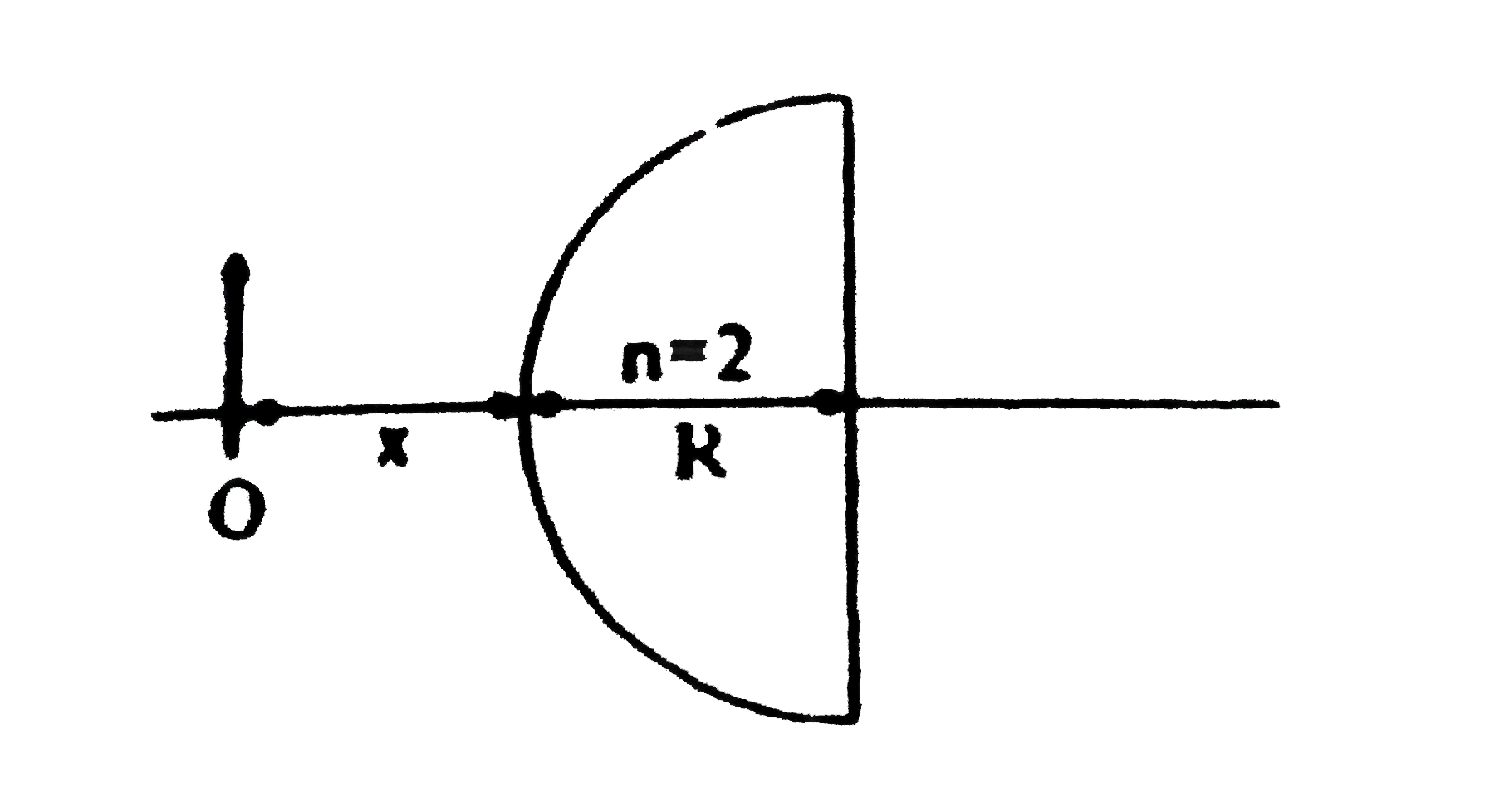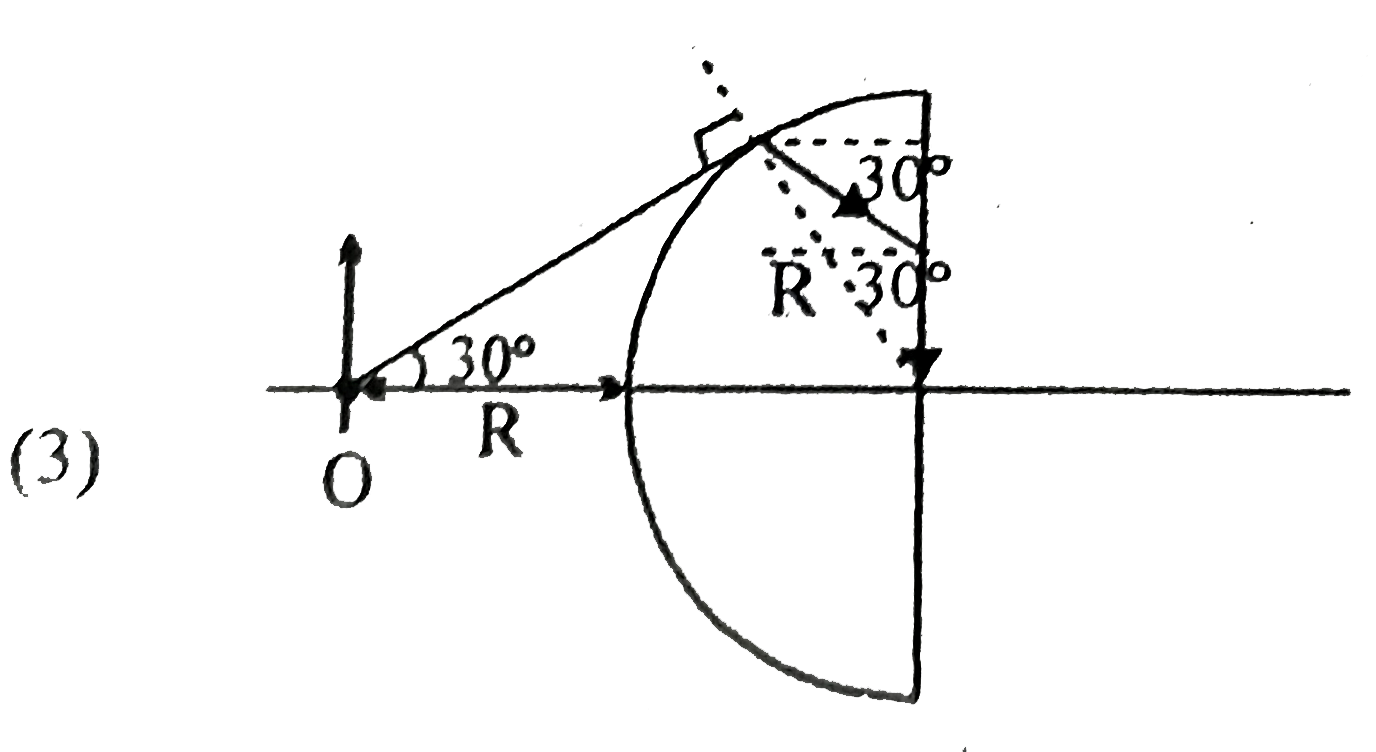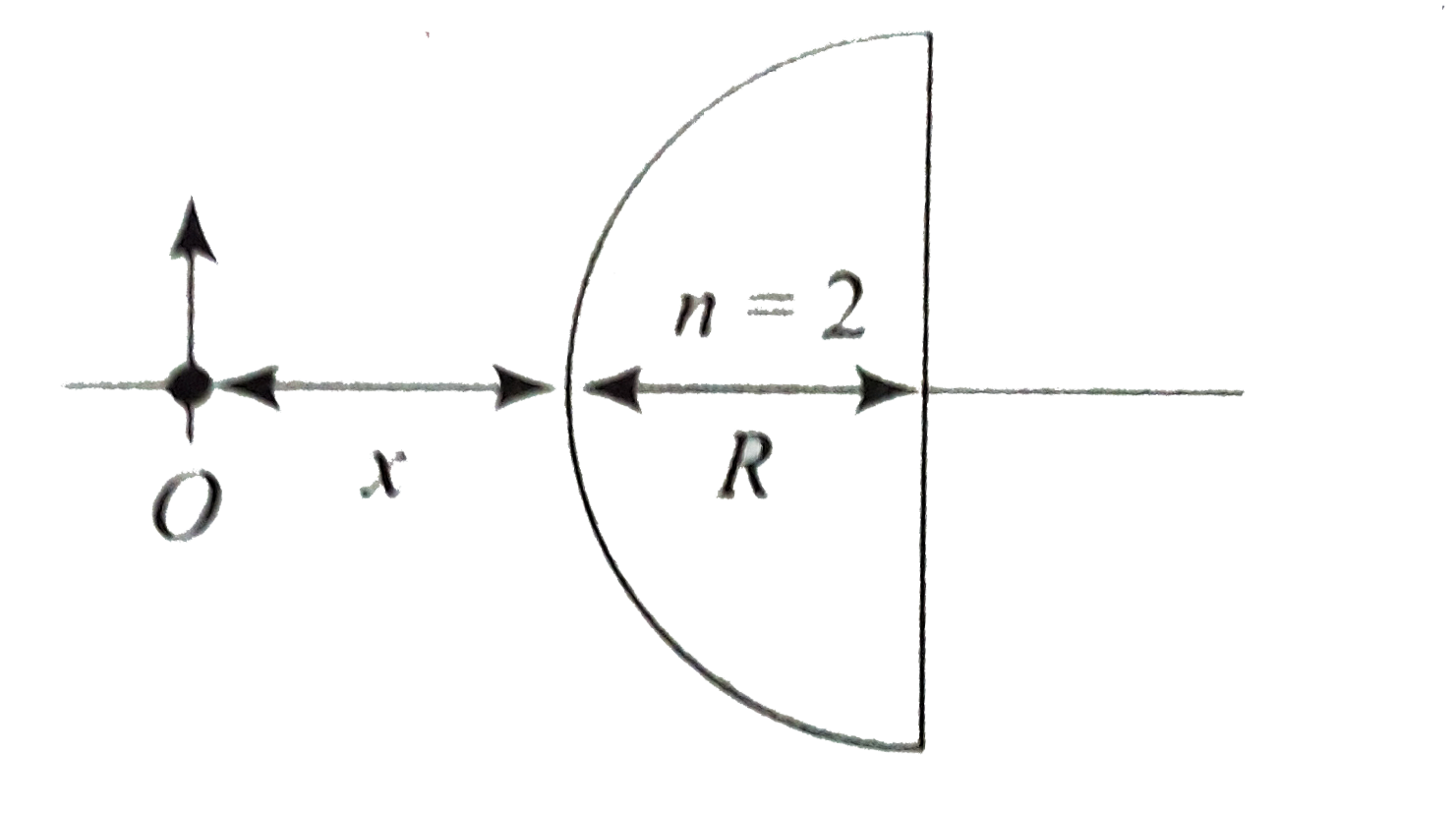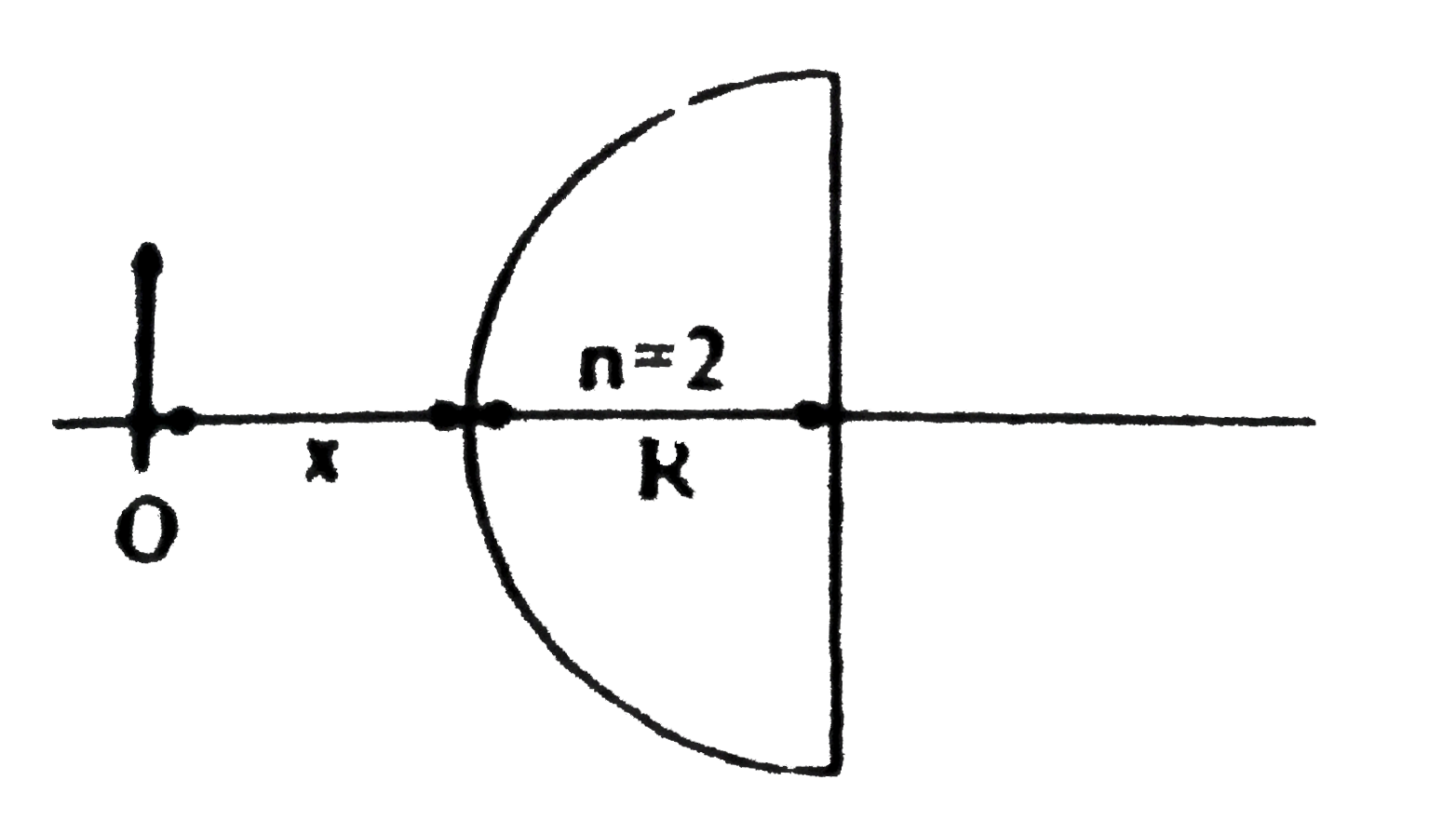Consider a transparent hemisphere (n=2) in front of which a small object is placed in air (n=1) as shown.

Consider a ray starting from O which strikes the spherical surface at grazing incidence (i=90∘) Taking x=R what will be the angle (from the normal) at which the ray emerges from the plane surface.
90∘
0∘
30∘
60∘
The correct Answer is:A
(1)μ2v−μ1u=μ2−μ1R
Taking refraction first at curve surface
2v1+1x=1R⇒v1=2Rxx−R
for plane surface
v'=v1−R⇒v'=xR+R2x−R⇒1v−2(x−R)R(x+R)=0
1v=2(x−R)R(x+R)
for virtual image
1v<0⇒2(x−R)R(x+R)<0
x<R
(2)Forx=2R
v1=4R2R=4R⇒u=−2R
m1=μ1μ2.vu=12.4R(−2R)=−1
m2=1⇒m1m2=−1 Image is real inverted and same size.

Topper's Solved these Questions
- MASTER PRACTICE PROBLEMBOOK - BANSALCHAPTER - MASTER PRACTICE PROBLEMEXERCISE - Reasoning
75 Videos
- MASTER PRACTICE PROBLEMBOOK - BANSALCHAPTER - MASTER PRACTICE PROBLEMEXERCISE - Multiple objective
131 Videos
- MASTER PRACTICE PROBLEMBOOK - BANSALCHAPTER - MASTER PRACTICE PROBLEMEXERCISE - Additional topic
70 Videos
- FLUID MECHANICSBOOK - BANSALCHAPTER - FLUID MECHANICSEXERCISE - PYQS AIEEE
10 Videos
- SEMICONDUCTORSBOOK - BANSALCHAPTER - SEMICONDUCTORSEXERCISE - CBSE Question
32 Videos
Similar Questions
Statement-1: The numerical value (n)of a physical quantity is inversely proportional to size of unit (u) being used to measure it.
Statement-2:The magnitude of physical quantity does not change by changing the units.
View SolutionThe quantity// quantities that does //do not have mass in its// their dimentions (when we take standard 7 quantities as fundmental) is//are:
View SolutionThe manifestation of band structure in solids is due to
View SolutionA cylinder of height 20m is completely filled with water. The velocity of effux of water (∈ms−1) through a small hole on the side wall of the cylinder near its bottom is
View SolutionHow does the width of the depletion layer of a p-n junction diode change with decrease in reverse bias?
View SolutionConsider a transparent hemispher (n=2) in front of which a small object is placed in air (n=1) as shown in figure.

Q. For which value of x, of the following , will the final image of the object O be virtual?
View SolutionConsider a transparent hemispher (n=2) in front of which a small object is placed in air (n=1) as shown in figure. Q. What is the nature of final image of the object when x=2R ?
View SolutionConsider a transparent hemisphere (n=2) in front of which a small object is placed in air (n=1) as shown in figure.

Q. Consider a ray starting from O which strikes the spherical surface at grazing incident (i=90∘). Takin x=R, what will be the angle (from normal) at which the ray may emerge from the plane surface.
View SolutionLight ray is incident on a prism of angle A=60∘and refractive indexμ=√2.the angle of incidence at which the emergent ray grazes the surface is given by
View SolutionConsider a transparent homogenous hemisphere of refractive index n=2 in front of which a small object is placed in air as shown in figure.
View SolutionConsider a transparent hemisphere (n=2) in front of which a small object is placed in air (n=1) as shown. For which value of x of the following will final image of object at O be virtual
View SolutionConsider a transparent hemisphere (n=2) in front of which a small object is placed in air (n=1) as shown.

What is the nature of final image of object x=2R
View SolutionLight ray is incident on a prism of angle A=60^(@) are refractive index mu=sqrt(2) . The angle of incidence which the emergent rays grazes the surface is given
View SolutionA ray of light strikes the glass slab at an angle of 90∘ from its surface. What is the angle of incidence and the angle of refraction ?
View SolutionA ray of light is incident at small angle I on the surface of prism of small angle A and emerges normally from the oppsite surface. If the refractive index of the material of the prism is mu, the angle of incidence is nearly equal to
View Solution
